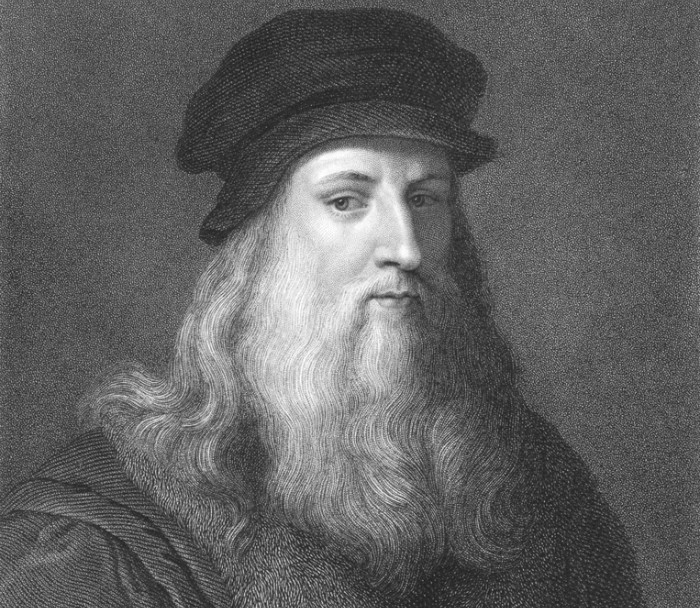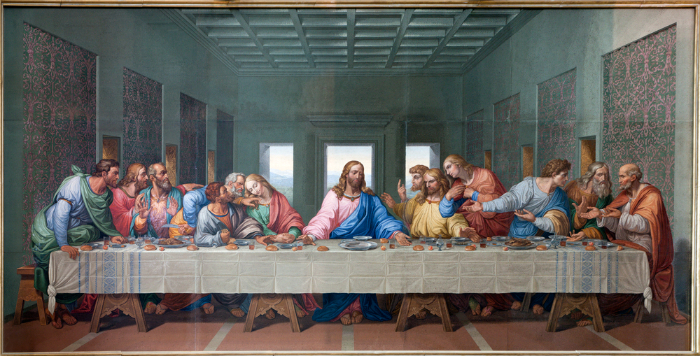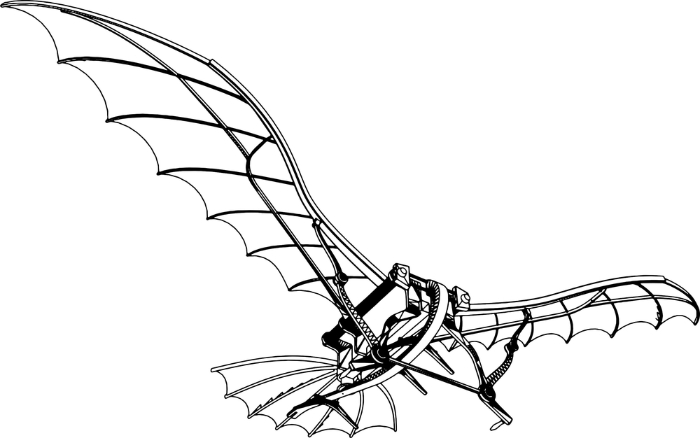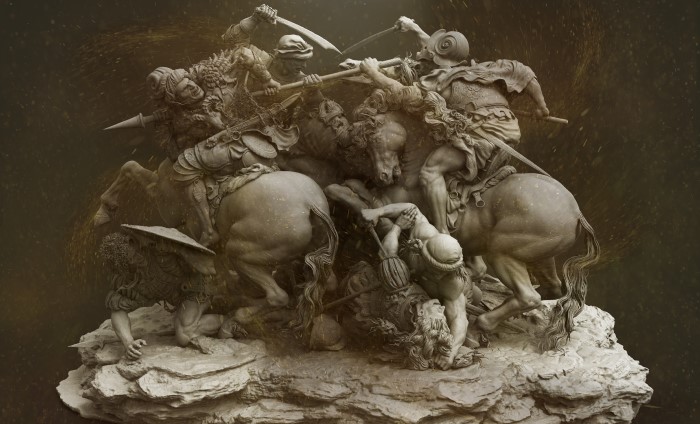
Everyone around the globe recognizes the legendary Leonardo da Vinci as the genius behind the masterpieces like the Mona Lisa. Whether they pronounce his name differently or prefer his paintings to his murals, his name is well-known. Some numerous theories and writings provide insight into how he viewed the world, humans, and animals. But who was the man that was hidden behind the genius? In this article, we'll attempt to uncover the individual by piecing together facts that will help us comprehend his multifaceted character as a cosmopolitan and universal being with ties to the whole world, not just one city. Get excited - we're about to uncover the real Leonardo da Vinci!

In Giorgio Vasari's book "The Lives of the Greatest Painters, Sculptors and Architects", the renowned Renaissance artist researcher referred to Leonardo as a heavenly being: "Truly, the sky every so often gifts us with a few who are not simply representatives of humanity, but of divinity". With these words, he was keen to express his sentiment about the famous polymath. He further stated: "He was an incredibly charming conversationalist whom the people's hearts yearned for". This is how Vasari was able to distinguish a fundamental factor of Leonardo's character: the versatility of his genius. He was always attempting to excel in a broad range of disciplines and mostly, he was searching for the perfect individual. An eager quest for an archetype of flawlessness, which prompted him to recognize his own restrictions and take them into account.
To gain a deeper understanding of Leonardo's origin and early life, we must look to the plethora of data from books and historians, which is often conflicting.
The past reveals the tale of Sir Piero da Vinci, the renowned notary from Florence, who had a son with a woman of uncertain descent named Caterina. Though Piero was betrothed to somebody else, he didn't wed the same woman. It is said that Caterina gave birth to her son in a monastery and her toddler spent his early childhood years there. Nevertheless, a notary book owned by Piero's father mentions the birth of his grandson at the family farm in Anchiano. Excitingly, this contradiction begs for a deeper investigation!
A recent analysis of Leonardo's fingerprint on one of his creations suggests that his mom Caterina might have been from the Middle East, perhaps even a slave brought to Tuscany during the 15th century. This notion has been carefully discussed but remains a mere assumption. Probably, his childhood was not an easy one, and the ambiguity of his relations with his parents likely encouraged him to mask his image. He frequently left his projects unfinished, since he viewed himself as imperfect and flawed.
In the notebooks of the Florentine genius, Leonardo da Vinci, there are exciting fairy tales crafted between 1490–1494 in the vernacular language. Did these fantastical tales bring joy to Renaissance courts? Perhaps, with his gifted skills, Leonardo sought to build a bridge between man and nature. The protagonists in these stories are mainly plants and animals, from spiders to crabs, eagles to butterflies, given human characteristics that make them stand out. The mirror, for instance, symbolizes vanity. The moral of the fables concentrates on the relationship between humanity and nature, and Leonardo didn't dare to tamper with it. Different editions of his fairy tales can be found in Italian bookstores, for both adults and children.
According to Vasari's book, Leonardo was known to have a mischievous side, but this did not take away from his genius. Rather, it made him more of a "complete man with a thousand faces" who was able to bring joy and entertainment to his friends. He would make wax animals and drop them onto the heads of guests, or keep a green lizard with dragonfly wings, carob, and fake horns in a box, then suddenly take it out and proclaim he had a baby dragon! He would also tell stories, and jokes, and draw caricatures to make everyone laugh while studying facial anatomy and muscle movements. His antics added a touch of excitement to his gatherings!
Again, the image of Leonardo that is presented to us is that of an inquisitive person.
One of Leonardo da Vinci's most notable traits was exploring the streets of the city to observe the motion of disabled people, which he would then use to authenticate the characters he painted. For over a year, he traversed the streets of Milan to find the perfect model for Judas in the iconic painting "The Last Supper". He was searching for a specific facial expression that would epitomize Christ's most contemptible disciple.

His portraits were not merely fancy, but rather he put in a lot of effort while creating them. His idiosyncratic illustrations are not as widely known as his other works, yet they are just as remarkable.
Leonardo da Vinci's remarkable bond with animals cannot be attributed solely to the lizard in the dragon's cloak. The Bestiario, a book of stories and sketches from Da Vinci's notebooks, offers an ordered and comprehensive list of animals he was aware of, inspired by Pliny the Elder's "Natural History" and folklore. The creatures depicted in the text are incredibly sensitive and can often be compared to human beings. In several of his artworks, animals of different species can be found, sometimes in plain sight, other times conveying a secret meaning - such as the world's most renowned weasel symbolizing absolute purity. Excitement abounds!

Leonardo was a passionate advocate for animal rights and protecting the environment. If he had lived in our era, he would likely have focused his research on renewable energy and creative solutions to preserve our surroundings. Being a vegetarian during his lifetime, he was certain of his convictions and his recipe book only had dishes that included fruits and vegetables. He was even known to frequent the market and purchase caged birds just to liberate them. These birds, among other creatures, sparked his experimentation with flying machines.
Accusations: "copying", ghosting and failures
Everyone understands that even geniuses have to battle with criticism, hearsay, and nasty speculations. Along his journey as a man and an artist, Leonardo encountered several inevitable defeats. These were usually due to his continuous search for fresh experiences and self-exploration. He was more concerned with his satisfaction than with gaining recognition and was driven by his interest in the topic.
For example, he created the renowned artwork "The Battle of Anghiari" for the "Hall of the Five Hundred" in Florence's old palace (Palazzo Vecchio) but employed a revolutionary technique that made the colors of the painting itself vanish. He intended to paint in the encaustic method instead of fresco, a decision so risky that Da Vinci eventually gave up and abandoned the piece without covering or eradicating it with a different work. He simply left it incomplete.

Decades later, Vasari's work blocked the painting from view, leaving it in a mysterious limbo between reality and fable. Doubt also remains: did Leonardo really begin the painting or did he stop after the preliminary drawings, realizing that his technique would not work?
He was derided for plagiarizing others' inventions; supposedly, his scientific experiments lacked authenticity and his inventions were essentially useless. We could propose that he just had engineering abilities that didn't lead to noteworthy developments; he mostly took concepts, tested them thoroughly, and developed prototypes that he didn't anticipate to be groundbreaking. But just because he was inspired by someone else, that doesn't mean he wasn't a genius. His level of lunacy was just right, motivating him to use his knowledge.
It was claimed that Leonardo was able to summon spirits. He would use the darkness of night to conduct the first autopsies on animal corpses, with tools crafted by his own hands. His willingness to break a moral code was driven by his passion and eagerness.
The Pope forbade him from performing these tests, but Leonardo managed to persuade the authorities to permit the examinations in the dark, putting his well-being at risk and facing the chance of contracting diseases.

Contrary to popular belief, the French did not steal the Mona Lisa - Leonardo himself brought her to France, and sold her for the equivalent of two years' wages in gold escudos. As a result, he became the first painter of the King of France, Francois I, and was given an allowance, the honor of staying in the French court, and his residence at Clos Lusa estate. It is said that he passed away in the arms of the King! He drew up plans for the royal palace of Francois' mother, was present at Lorenzo de' Medici's wedding, and aided in the making of Machiavelli's La Mandragola.In 1518, Leonardo completed his collections of manuscripts, such as Codex Atlanticus (found in the Ambrosian Library in Milan) and the Windsor Collection (in Windsor Castle, England). How enthralling!
His works contained peculiar features that became renowned, like writing in reverse (which could only be read in a mirror), starting from the last page and using anagrams (which could be letters) so only a few could decipher them.
We don't need to overstate Leonardo's greatness. To comprehend her, we must attempt to envision the man she was, the genius behind the gorgeous face, long beard and well-proportioned body.